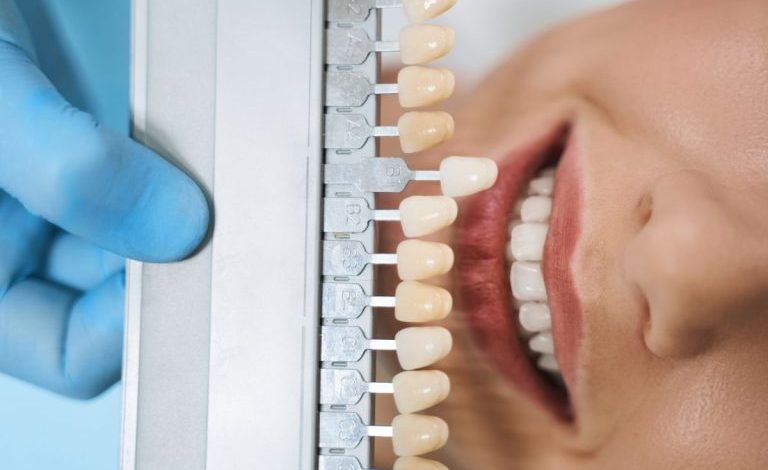Common Procedures Done for the Installation of Dental Veneers

The way you look and feel about your appearance is greatly influenced by your teeth. It has the power to affect one’s way of life everyday. Additionally, maintaining your teeth will help your smile seem as good as it can because it will be one of the first things that others notice about you. It makes people’s impressions of other people last. However, not everyone is blessed with a perfect, bright and white smile. Good thing that there are several dental solutions that can be done to address issues that hinder one to be confident with their smile. This includes the installation of dental veneers, which are designed to enhance and beautify your teeth, while still looking natural.
Dental veneers, also known as porcelain veneers or dental porcelain laminates, are ultra-thin, custom-made covers for the front of the teeth that are composed of materials that match your natural teeth. They are actually a popular cosmetic dental treatment that helps create a beautiful, natural-looking smile. The teeth’s color, form, size, or length are altered by these shells, which are glued to the front of the teeth.
This dental solution usually addresses issues such as teeth that are discolored and stained; teeth that are worn down, chipped, or broken; teeth that are misaligned, uneven, or irregularly shaped; and teeth with gaps between them. Veneers can also help in making a weaker set of teeth that does not have some form of decay stronger. The versatility of dental veneers makes it one of the common solutions for enhancing and beautifying one’s set of teeth.
Compared to other restorations, dental veneers actually appear more natural. They might be fooled into real teeth with ease. And like an actual tooth, porcelain reflects light. Veneers are superior to natural enamel in various ways. Like natural teeth, porcelain will not wear or stain. Furthermore, clinical studies have demonstrated that with proper care, your new smile will continue to look as radiant as the day it was fitted with veneers, even years after the treatment. The best aspect is that little to no tooth preparation is needed for veneers. They mimic natural teeth and will not weaken your natural tooth structure.
All this being said, before having to opt for the installation of dental veneers, it is important that you know the common procedures done so you would know what to expect. Read on to learn more.
Diagnosis and Treatment Planning
The initial step that one must go through upon opting for dental veneers installation would be having a dentist identify what needs to be addressed for your teeth enhancements. You will let them know the result that you are trying to achieve as well. During your first appointment, your dentist will evaluate your teeth. This is done in order to identify whether dental veneers are a good option for you. They will also take intraoral pictures, dental x-rays, and conduct a thorough examination. And before you even begin the process, some locations will employ an intraoral scanner. This will then show you your before and after images.
Furthermore, dentists will use this initial visit to discuss with each patient the objectives they have for their new veneers. The dentist will generate a set of photographs known as a mock-up in the following step. This shows the patient what the final results would look like. To guarantee that patients receive the greatest care and achieve the desired results, dentists will spend a lot of time on these representations.
Preparation
Once the dentists have determined how they would structure your veneers, it is time for preparation. In this step, your dentist will reshape the tooth surface to almost exactly match the thickness of the veneer that will be applied to the tooth surface in order to prepare a tooth for a veneer. To make you feel comfortable during the process, the dentist will numb you with a local anesthetic.
Your dentist will then create a model, also known as an impression, of your tooth. This model is delivered to a dental lab, to create custom dental veneers that fit precisely to your teeth. However, the veneers return from the laboratory in 2 to 4 weeks on average. In the meanwhile, your dentist will make a temporary veneer chairside. This is to provide you with a restoration to wear while your veneers are ready. They typically last a few weeks and are not intended to be permanent.
Bonding
Once the permanent dental veneers have been created, dentists will now suggest for they be installed. But before securely attaching the veneer permanently, your dentist will first place it on your tooth to check its fit and color. They will then repeatedly remove and trim the veneer to obtain the ideal fit. The color of the veneer can be altered depending on the type of cement being used. Your tooth will next be cleaned, polished, and etched to get it ready for the veneer. It will be made rougher by etching to promote a powerful bonding process.
Then, the veneer will be coated with a unique cement before being bonded to your tooth. Your dentist will place the veneer in the ideal location before using a special light beam. This will then activate chemicals in the cement and hasten the hardening process.
The last few procedures involve cleaning up any extra cement, assessing your bite, and making any necessary corrections. Your dentist might ask you to come back for a follow-up appointment in a couple of weeks. This is in order to examine your gums and the placement of the veneer.
Key Takeaway
There is no better cosmetic operation than the placement of dental veneers, particularly if you want to significantly alter your smile and boost your confidence. With the right maintenance, this kind of veneer can completely change the way you look by giving you a “Hollywood smile” that will endure for at least ten years. And because veneers mimic the appearance and feel of real teeth without significantly harming the original tooth, very few people regret getting them. Though the primary drawback is their high price, still keep in mind that it is an investment in your confidence and dental health.




